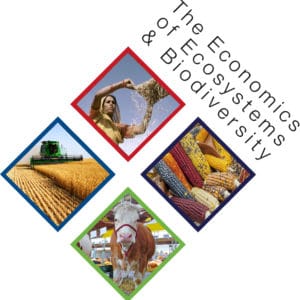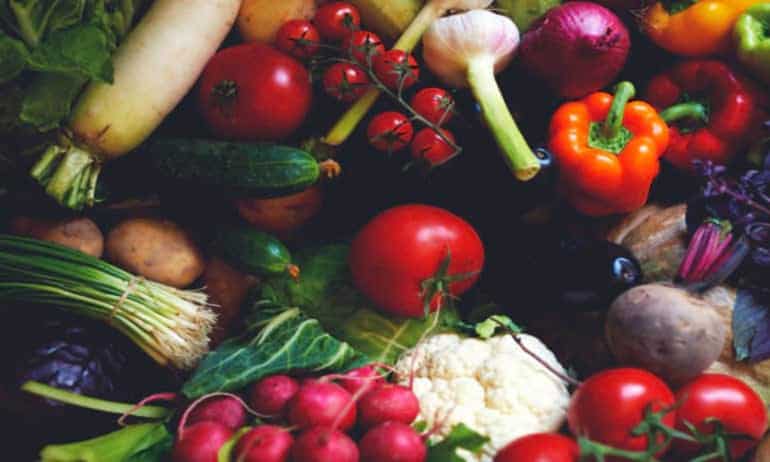Ruth Richardson is the Executive Director of the Global Alliance for the Future of Food and an expert in global agriculture and food systems. She is on the Steering Committee for the new report from The Economics of Ecosystems and Biodiversity for Agriculture and Food (TEEBAgriFood). The report evaluates the world’s agriculture and food systems while considering a range of social, human, and environmental dimensions across the value chain.

Ruth Richardson’s work with the Global Alliance for the Future of Food focuses on leveraging resources to shift food and agriculture systems towards greater sustainability, security, and equity. She also operates a consulting company, Open Blue, and served as the first Environmental Program Director at the Metcalf Foundation. Richardson was the first Director of the Unilever Canada Foundation and the founding Chair of the Canadian Environmental Grantmakers’ Network.
Food Tank sat down with Ruth to discuss how the TEEBAgriFood report addresses the realities and challenges of the eco-agri-food system.
Food Tank (FT): What is the most interesting thing you learned from working with TEEBAgriFood?
Ruth Richardson (RR): The importance of economics. That may sound simple and obvious, but for those without strong economic backgrounds, it is imperative to see the value of economics in our eco-agri-food system. The food system is broken and the TEEBAgriFood report shows the need to tackle the economic side of the food system dilemma by proposing a holistic, comprehensive valuation framework. The TEEBAgriFood approach is simply another critical tool in the toolbox as it helps make visible currently invisible impacts from our food system. It’s essential to understand the cost, benefits, externalities, and impacts of the food system, and the trade-offs we must weigh to make the food system more sustainable, secure, and equitable. The method that TEEBAgriFood takes is critical in terms of its comprehensive and holistic approach to moving the food system towards sustainability.
FT: What is the most significant consequence of our current food system that policymakers, funders, and donors ignore?
RR: There is a persistently narrow view of food systems that values yield and profit above anything else – like health or local economic development. This narrow approach contributes to many of the current problems we have in our food systems, such as deforestation and pesticide exposure because we don’t see or value these other impacts. Seeing the full picture of the impacts of our food and agriculture systems helps lead to wiser decision-making so that we don’t fall into narrow solutions and unintended consequences. It’s only through holistic reviews of food systems that policymakers, farmers, businesses, and citizens can see the full range of the impacts of our collective decisions.
FT: What is the best path towards sustainable agriculture to support a growing global population?
RR: Supporting a growing global population is not the right way to frame this conversation. The population is growing, and people need to feed themselves, but this twists the debate. The best path towards sustainability is ensuring we attend to all necessary components or principles of the food system – environmental integrity, nutritious food, and equality for all people. To put it a different way, we need to focus on our intentions for the food system – what do we want the food system to do for us? Then the path will follow those intentions. If our intention is to feed everyone enough calories in the fastest way possible, that will lead to an unsustainable path. However, if our intention is to have all people feed themselves well without harming the planet while building local economies, this will result in very different decisions. Support, such as that by the Global Alliance Beacons of Hope report are showing ways to achieve the latter. Therefore, it’s essential to decide what we are going to get out of the system and what principles and intentions we are going to uphold to do so.
FT: How can we make global changes to the eco-agri-food system?
RR: It’s going to require changes of and between stakeholders across the globe. There is no one silver bullet and no one group can affect change on their own. To be as successful as possible and to quickly move to the necessary transformational change requires strong coordination between different actors. People must come together to have difficult conversations about how to move forward and link initiatives. Making connections and having a deep dialogue requires a global approach.
FT: How will the TEEBAgriFood report be useful to non-profits and NGOs working on our eco-agri-food system?
RR: The report is useful to any stakeholder interested in changing the food system. It provides a framework which applies to policy, farms, landscape level systems, private sector businesses, and public finance. The application opportunities are endless. By providing information about the impacts and externalities of the eco-agri-food system, the framework allows for better decision-making. For example, if a farmer is looking at their farming practices, this report will show the impacts of the farm in terms of environmental, health, and social factors. Or, if a not-for-profit is interested in making policy recommendations on the United States Farm Bill, TEEBAgriFood can show the impacts of the Farm Bill on biodiversity conservation, farmer supports, and healthy diets. It’s a tool to make different decisions about how best to produce, process, sell, and consume our food. This information is valuable in setting priorities of organizations and governing bodies.
FT: What do you want people to know most about the TEEBAgriFood report?
RR: The food system is broken, we have an opportunity and responsibility to fix it, and the TEEBAgriFood framework is one of the most powerful platforms to do so.
Click HERE to download the TEEBAgriFood report!
 The goal of TEEB AgriFood is to more comprehensively determine the costs, benefits, and dependencies of agriculture and food production. What makes some produce less expensive in most supermarkets is in part the use of cheap—often subsidized—fertilizers and pesticides, but that retail price does not take into account hidden costs like environmental damage from runoff or human impacts on health and livelihood. Conversely, these prices do not recognize the positive benefits created by more sustainable forms of agriculture. To ensure the sustainability of agriculture and food systems, an important step is to account for the side effects, or externalities, through market mechanisms. TEEB AgriFood is creating a framework for looking at all the impacts of the ‘eco-agri-food’ value chain, from farm to fork to disposal, including effects on livelihoods, the environment, and health. This can help farmers, decision makers, and businesses more explicitly look at the impacts of different practices and policies.
The goal of TEEB AgriFood is to more comprehensively determine the costs, benefits, and dependencies of agriculture and food production. What makes some produce less expensive in most supermarkets is in part the use of cheap—often subsidized—fertilizers and pesticides, but that retail price does not take into account hidden costs like environmental damage from runoff or human impacts on health and livelihood. Conversely, these prices do not recognize the positive benefits created by more sustainable forms of agriculture. To ensure the sustainability of agriculture and food systems, an important step is to account for the side effects, or externalities, through market mechanisms. TEEB AgriFood is creating a framework for looking at all the impacts of the ‘eco-agri-food’ value chain, from farm to fork to disposal, including effects on livelihoods, the environment, and health. This can help farmers, decision makers, and businesses more explicitly look at the impacts of different practices and policies.













